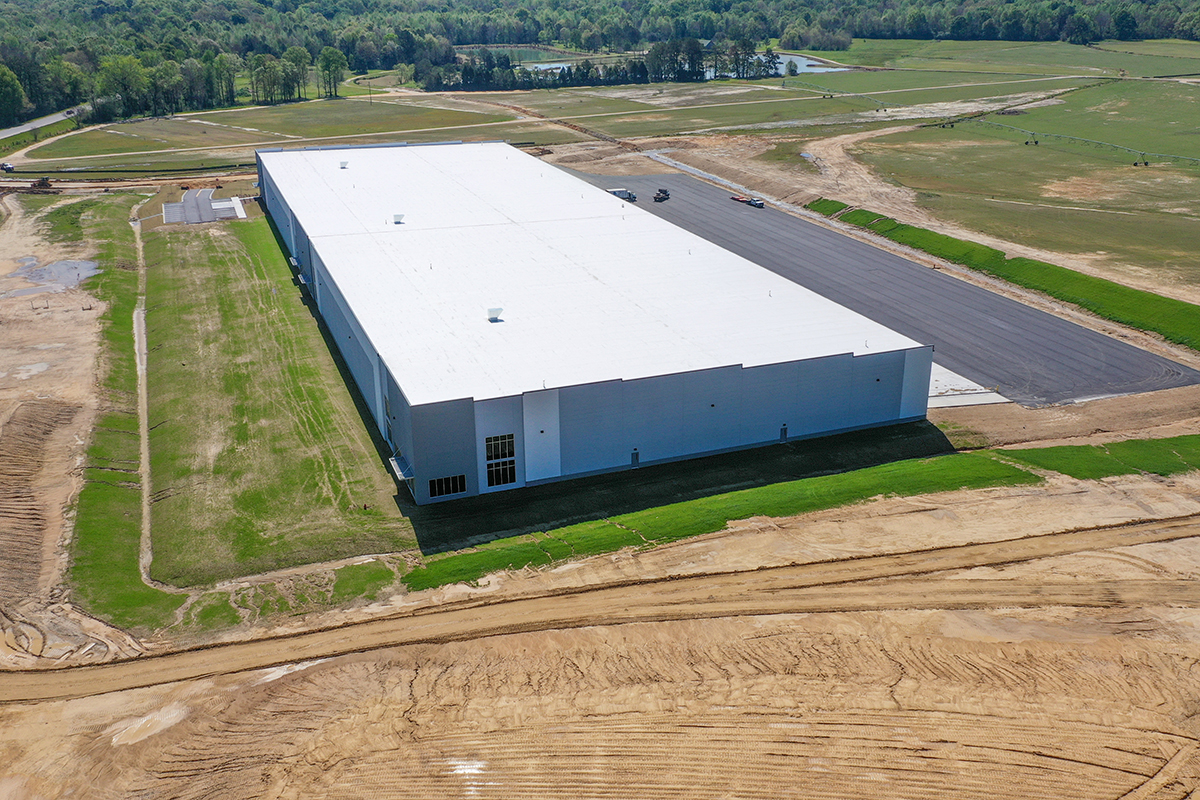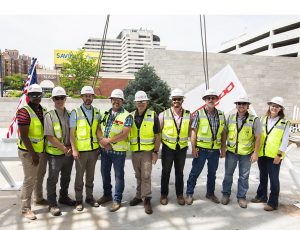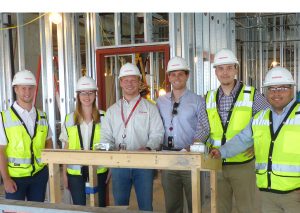 By Charlie King, Corporate Relations Manager
By Charlie King, Corporate Relations Manager
WHAT IS TILT WALL
Tilt wall (or tilt up) construction is achieved by casting the concrete walls for a building horizontally, typically on the floor slab of the building or on temporary casting beds, then erecting those walls with a crane to their final position. Tilt up construction has become the most common method of construction for large scale warehouse, distribution, and manufacturing facilities in the industrial market due to the cost efficiency, speed of construction, and durability.
IMPORTANCE OF QUALITY CONTROL
As with any type of construction, quality control is paramount when dealing with tilt up buildings. The obvious aspects are ensuring that the dimensions of the panels, locations and sizes of the rebar, and concrete mix meet the specifications but there are numerous other critical details that must be precise. The different panels will have various penetrations for windows, doors, fans, louvers, dock equipment, MEP, etc. They will also have embedded steel plates for wall-to-wall connections, wall to structural connections, as well as hoisting and bracing connections. If a mistake is made that is not discovered before the concrete is poured, then substantial re-work will have to be done which will cost the project time and money to mitigate.
THE DOSTER APPROACH
The proactive approach to ensuring that the QA/QC standards are met is to create a panel book which consists of shop drawings of each panel with all required dimensions of every penetration and all rebar. The concrete subcontractor will typically create the panel book and submit it to the project management and design teams for approval. From there a final, approved panel book will be created that the onsite superintendents will use to physically verify that each panel is correct prior to concrete being poured.
Once the panels have been poured and cured, a crane will hoist the walls into position and a ground crew will temporarily brace the panels in place prior to the final structural connections being made. The bracing must be done correctly to ensure that the walls do not fall. The structural connections must be inspected by the testing agency and deficiencies reported to, then subsequently corrected by the project management team.
ADVANTAGES OF TILT WALL CONSTRUCTION
One of the major advantages of using this method of construction is the speed to market. After the building pad is complete, the shell of a half million square foot tilt wall building can be dried in in six months. The phasing of steel erection can be done before, after, and, if safety permits, during the construction of the walls, which allows the contractor to be flexible if lead times are an issue.
Another advantage is the quality of the product that is delivered for this type of building. A “Class A” tilt wall building is durable and low maintenance and will last substantially longer than a pre-engineered metal building.
Finally, tilt wall buildings are versatile. If they are built to the standards of a “Class A” building then they can be used to serve a wide array of tenants. The use of reveals and different paint schemes can add to the aesthetics of the exterior of the building.
WHY DOSTER?
At Doster, we pride ourselves on our commitment to relationships across all teams and stakeholders. Our goal is not only to complete the project on time and budget, but also for everyone to walk away wanting to work with us again.

After completing the first building at Regional East Alabama Logistics (REAL) Park in Macon County, Alabama with Farpoint Development, Keith Clarke, Principal and Chairman at MCA Architecture, Inc. said:
“Doster makes it easy. Without any prompting, they took the extra steps to provide a very clean project inclusive of pressure washing elevated interior structural components. Not only were construction standards delivered with the highest quality, the only change order was a deductive change order. Project management staff did an excellent job of communicating with design team and the owner throughout project duration, and the field staff showed a high level of competency.”
Click here to learn more about Doster’s industrial and tilt wall expertise.



